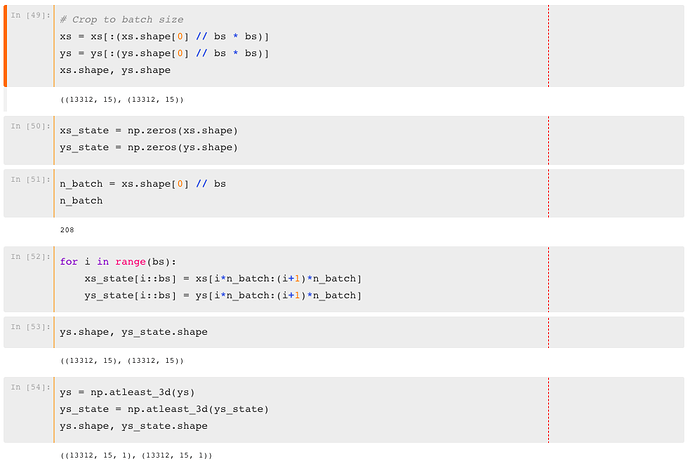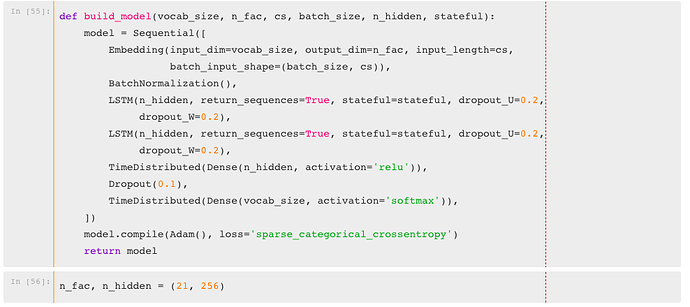From my understanding of stateful RNN where batch size > 1, the keras documentation states
all batches have the same number of samples
If X1 and X2 are successive batches of samples, then X2[i] is the follow-up sequence to X1[i], for every i.
This essentially means that the data must be “interleaved” in batches as discussed here:
https://www.reddit.com/r/MachineLearning/comments/4k3i2n/keras_stateful_lstm_what_am_i_missing/
and also here: Does the stateful_lstm.py example make sense? · Issue #1820 · keras-team/keras · GitHub
My understanding the training data has to be re-constructed to look like this:
Sequence: a b c d e f g h i j k l m n o p q r s t u v w x y z 1 2 3 4 5 6
BATCH 0
sequence 0 of batch:
a
b
c
d
sequence 1 of batch:
q
r
s
t
BATCH 1
sequence 0 of batch:
e
f
g
h
sequence 1 of batch:
u
v
w
x
However, it doesn’t look like @jeremy is doing this in Lesson 6 in his notebook for the stateful LSTM (and the batch size = 64). Did Jeremy make a mistake, or do I have a mis-understanding?


